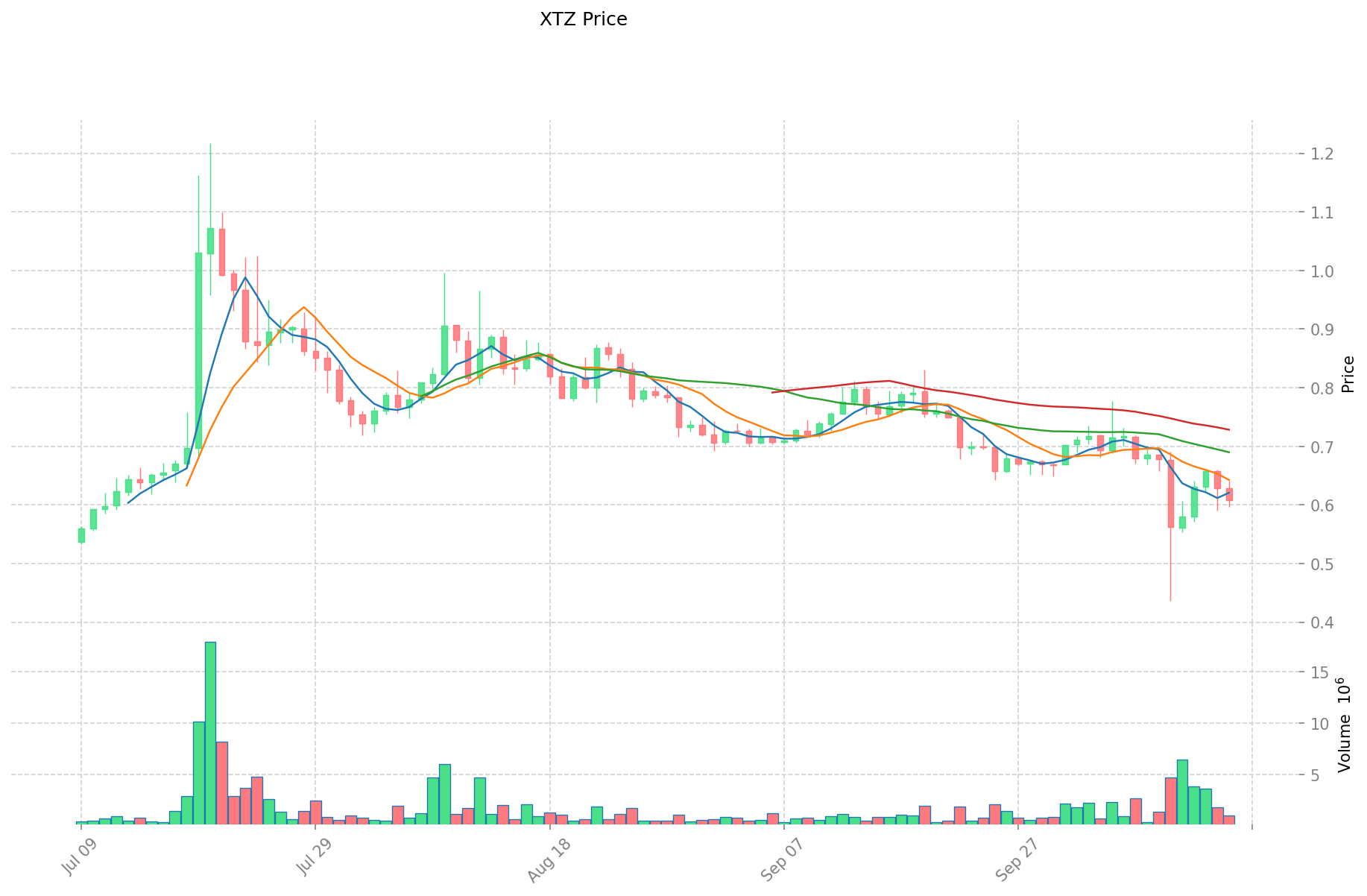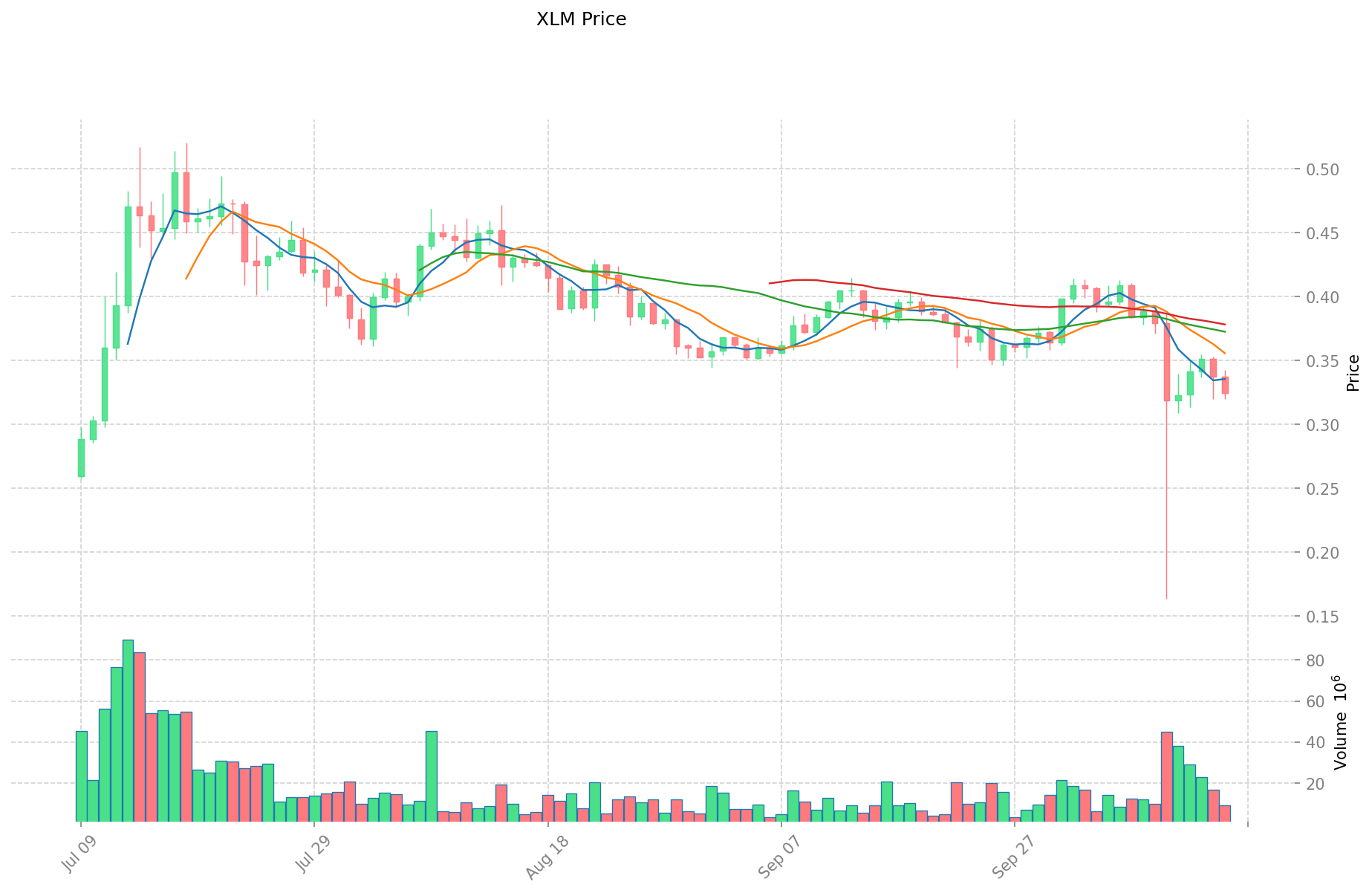XTZ vs XLM: Comparing the Performance and Potential of Tezos and Stellar in the Cryptocurrency Market
Introduction: XTZ vs XLM Investment Comparison
In the cryptocurrency market, Tezos vs Stellar has always been a topic that investors cannot avoid. The two not only have significant differences in market cap ranking, application scenarios, and price performance, but also represent different cryptocurrency positioning.
Tezos (XTZ): Since its launch, it has gained market recognition for its self-evolving blockchain technology and formal verification capabilities.
Stellar (XLM): Launched in 2014, it has been hailed as a decentralized gateway for transmitting digital and fiat currencies, enabling fast and low-cost transfers of digital assets between banks, payment institutions, and individuals.
This article will comprehensively analyze the investment value comparison between XTZ and XLM, focusing on historical price trends, supply mechanisms, institutional adoption, technological ecosystems, and future predictions, and attempt to answer the question investors care about most:
"Which is the better buy right now?"
I. Price History Comparison and Current Market Status
Historical Price Trends of XTZ (Tezos) and XLM (Stellar)
- 2021: XTZ reached its all-time high of $9.12 due to increased adoption and network upgrades.
- 2022: XLM experienced significant volatility as the crypto market faced broader economic challenges.
- Comparative analysis: During the recent market cycle, XTZ dropped from its peak of $9.12 to a low of $0.350476, while XLM showed relatively less volatility, maintaining a more stable price range.
Current Market Situation (2025-10-16)
- XTZ current price: $0.6054
- XLM current price: $0.32296
- 24-hour trading volume: XTZ $621,848 vs XLM $2,922,815
- Market Sentiment Index (Fear & Greed Index): 28 (Fear)
Click to view real-time prices:
- Check XTZ current price Market Price
- Check XLM current price Market Price


Key Factors Affecting XTZ vs XLM Investment Value
Supply Mechanism Comparison (Tokenomics)
- XTZ: Market sentiment plays a direct role in its valuation, with investor confidence significantly impacting price trends
- XLM: Adoption rates and partnerships are key factors affecting its price, with network usage directly influencing value
- 📌 Historical pattern: Both cryptocurrencies experience price volatility based on market sentiment and regulatory announcements
Institutional Adoption and Market Applications
- Institutional holdings: Both coins appear on traders' watchlists alongside established cryptocurrencies like LTC
- Enterprise adoption: XLM shows potential in payment applications and cross-border transactions
- Regulatory attitudes: Government policies and regulations directly impact market acceptance and value relative to fiat currencies
Technical Development and Ecosystem Building
- XTZ technical upgrades: Customizable subnets creation capability enhances project flexibility and enterprise applications
- XLM technical development: Partnership developments influence its adoption and potential for growth
- Ecosystem comparison: XTZ shows potential as an NFT market competitor to Ethereum, offering artists easier visibility compared to Ethereum's marketplace
Macroeconomic and Market Cycles
- Performance in inflationary environments: Economic trends affect exchange rates for both cryptocurrencies
- Macroeconomic policy impacts: Regulatory environments directly influence market acceptance and relative value
- Geopolitical factors: Both cryptocurrencies offer benefits including efficient transfers with reasonable fees and anonymity features
III. 2025-2030 Price Prediction: XTZ vs XLM
Short-term Prediction (2025)
- XTZ: Conservative $0.34-$0.60 | Optimistic $0.60-$0.63
- XLM: Conservative $0.28-$0.32 | Optimistic $0.32-$0.33
Mid-term Prediction (2027)
- XTZ may enter a growth phase, with expected price range of $0.65-$0.79
- XLM may enter a steady growth phase, with expected price range of $0.34-$0.46
- Key drivers: Institutional capital inflow, ETF, ecosystem development
Long-term Prediction (2030)
- XTZ: Base scenario $0.96-$1.09 | Optimistic scenario $1.09-$1.20
- XLM: Base scenario $0.44-$0.58 | Optimistic scenario $0.58-$0.70
Disclaimer: This analysis is for informational purposes only and should not be considered as financial advice. Cryptocurrency markets are highly volatile and unpredictable. Always conduct your own research before making investment decisions.
XTZ:
| 年份 | 预测最高价 | 预测平均价格 | 预测最低价 | 涨跌幅 |
|---|---|---|---|---|
| 2025 | 0.628992 | 0.6048 | 0.344736 | 0 |
| 2026 | 0.88216128 | 0.616896 | 0.45033408 | 1 |
| 2027 | 0.787005072 | 0.74952864 | 0.6520899168 | 23 |
| 2028 | 0.86045887872 | 0.768266856 | 0.56083480488 | 26 |
| 2029 | 1.1156771282832 | 0.81436286736 | 0.5456231211312 | 34 |
| 2030 | 1.090472597538408 | 0.9650199978216 | 0.646563398540472 | 59 |
XLM:
| 年份 | 预测最高价 | 预测平均价格 | 预测最低价 | 涨跌幅 |
|---|---|---|---|---|
| 2025 | 0.3331947 | 0.32349 | 0.2846712 | 0 |
| 2026 | 0.4301284785 | 0.32834235 | 0.170738022 | 1 |
| 2027 | 0.462667205385 | 0.37923541425 | 0.341311872825 | 17 |
| 2028 | 0.44620838840655 | 0.4209513098175 | 0.3704371526394 | 30 |
| 2029 | 0.459594640058746 | 0.433579849112025 | 0.420572453638664 | 34 |
| 2030 | 0.576097545515147 | 0.446587244585385 | 0.397462647680993 | 38 |
IV. Investment Strategy Comparison: XTZ vs XLM
Long-term vs Short-term Investment Strategy
- XTZ: Suitable for investors focused on ecosystem potential and NFT market growth
- XLM: Suitable for investors interested in payment solutions and cross-border transactions
Risk Management and Asset Allocation
- Conservative investors: XTZ 40% vs XLM 60%
- Aggressive investors: XTZ 60% vs XLM 40%
- Hedging tools: Stablecoin allocation, options, cross-currency portfolios
V. Potential Risk Comparison
Market Risk
- XTZ: Higher volatility, susceptible to market sentiment shifts
- XLM: Relatively stable, but still affected by overall crypto market trends
Technical Risk
- XTZ: Scalability, network stability
- XLM: Network congestion during high-volume periods, potential security vulnerabilities
Regulatory Risk
- Global regulatory policies may impact both differently, with XLM potentially facing more scrutiny due to its focus on financial transactions
VI. Conclusion: Which Is the Better Buy?
📌 Investment Value Summary:
- XTZ advantages: Self-evolving blockchain, NFT market potential, customizable subnets
- XLM advantages: Fast and low-cost transfers, established partnerships, cross-border transaction efficiency
✅ Investment Advice:
- New investors: Consider a balanced approach, leaning towards XLM for its relative stability
- Experienced investors: Explore XTZ for its growth potential in the NFT space
- Institutional investors: Evaluate both based on specific use cases and alignment with organizational goals
⚠️ Risk Warning: The cryptocurrency market is highly volatile. This article does not constitute investment advice. None
VII. FAQ
Q1: What are the main differences between XTZ and XLM? A: XTZ (Tezos) is known for its self-evolving blockchain technology and formal verification capabilities, while XLM (Stellar) focuses on fast and low-cost transfers of digital assets between banks, payment institutions, and individuals.
Q2: Which cryptocurrency has shown better price stability? A: Based on historical data, XLM has shown relatively less volatility and maintained a more stable price range compared to XTZ.
Q3: What are the key factors affecting the investment value of XTZ and XLM? A: Key factors include supply mechanisms, institutional adoption, technical development, ecosystem building, macroeconomic conditions, and market cycles.
Q4: How do the long-term price predictions for XTZ and XLM compare? A: By 2030, XTZ is predicted to reach $0.96-$1.20, while XLM is expected to reach $0.44-$0.70 in optimistic scenarios.
Q5: What are the main risks associated with investing in XTZ and XLM? A: Both face market risks related to crypto volatility. XTZ has higher technical risks related to scalability and network stability, while XLM may face more regulatory scrutiny due to its focus on financial transactions.
Q6: How should investors allocate their assets between XTZ and XLM? A: Conservative investors might consider 40% XTZ and 60% XLM, while aggressive investors might opt for 60% XTZ and 40% XLM. However, individual circumstances and risk tolerance should guide allocation decisions.
Q7: Which cryptocurrency is better suited for different types of investors? A: New investors might lean towards XLM for its relative stability. Experienced investors could explore XTZ for its growth potential in the NFT space. Institutional investors should evaluate both based on specific use cases and organizational goals.
Share
Content